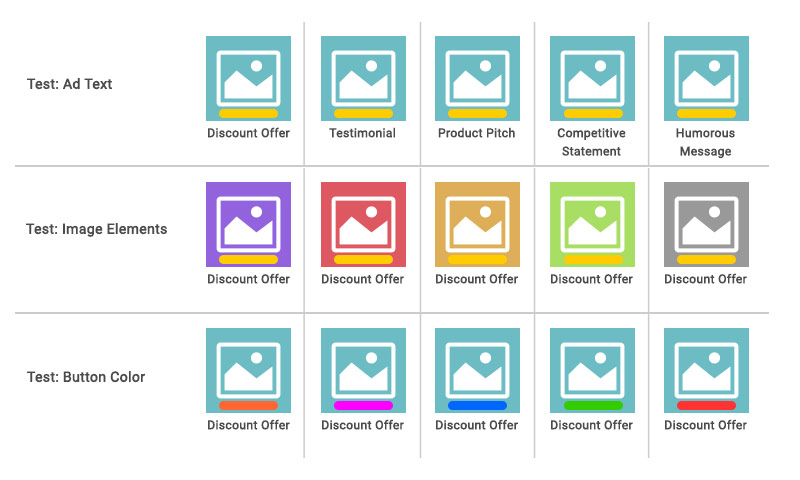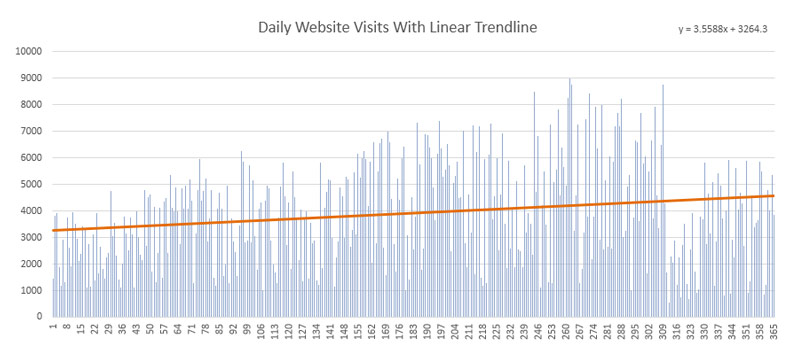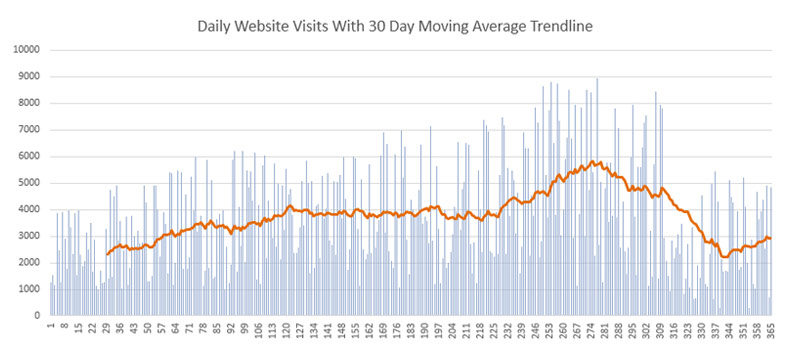8 Tactics for Making Confident Marketing Decisions

In marketing as with almost every other discipline, it is important to be able to make confident decisions. It becomes especially critical when these decisions have large financial implications. You certainly don’t want to waste your time or that of your team members. And you most certainly don’t want to waste money investing in strategies that you are uncertain about. Making confident decisions is the end point of a process of asking questions and seeking answers. Once you have completed your decision making process, only then should you start allocating resources.
Whether you are a business owner, an executive, or a manager, it is important to present or execute on recommendations that have a high probability of success. This requires data, data accuracy and the ability to make actionable sense of the data itself.
Check out these 8 tactics below to help you make more confident marketing decisions.
- Build Confidence Into Your Marketing Campaigns
- Testing Tactics for Building Marketing Confidence
- Get Organized and Keep Those Records
- Track Analytics The Right Way and For Free
- Get Serious About Marketing Reporting
- Seek Out Multiple Opinions
- Challenge Your Own Beliefs
- Hire A Marketing Analyst
- Final Thoughts
1. Build Confidence Into Your Marketing Campaigns
To make more confident marketing decisions it is important to build your campaigns so they can foster and support your strategic confidence. This tactic requires some planning, but will be well worth the effort. It is important to plan your campaigns so that they offer opportunities for testing, learning, and answering important questions.

Always Be Testing
When planning your ad campaigns, always include testing of at least 1 hypothesis or question that you would like to have answered. This will allow you to iterate and optimize your ad campaigns for performance, but also help you to learn about what marketing messages your audience responds to best. As you learn more about the results of your ad campaign testing, your confidence in the ad campaign in question as well as your overall marketing strategy will increase. Here are some tactics for running ad test campaigns that build confidence.
- When planning an ad test, make sure to change only one thing between each ad so that when differences in performance arise you will be confident in the reason for the variance.
- Set aside enough budget to get enough actionable data so you will be confident of the results. A budget that is too small, or a test that includes too many ads may yield false learnings that don’t represent actual audience behavior.
- Do not auto-optimize your individual ads. Let the ad server rotate your ads equally so you can see real performance as it unfolds. Do your own optimization by shutting off lower performing ads only after you are certain that you have obtained enough data.
- Don’t make changes to your ad tests to often or to quickly. It is sometimes better to let the campaign run its course so you can get enough data to be confident in future campaign decision making. Sometimes it takes time for results to accrue so better to wait; give yourself the required time to measure accurately.
Simple A/B Ad Testing
Create a single campaign and a set of 3-5 ad variants that tests for one type of criteria change at a time. Ad criteria can include: text, headlines, landing pages, imagery, audience targeting, geographical targeting, day-parting, and more.
Example: You are curious which calls to action perform the best for your audience. You decide to test 5 ads that are identical except for their headlines. Each headline focuses on a unique concept including: discount offer, testimonial, product pitch, competitive statement, and a humorous message. When the ad campaign completes, you will be able to understand which types of concepts outperform, under perform, or don’t make a difference.

Multi-Variable Matrix Ad Test
In this situation you are looking to get multiple sets of learnings at one time. You will need significantly more budget to run each individual ad variant enough times so that you can get enough data to be confident in the results. For a matrix ad test you will need to create a grid or matrix where each cell represents one ad. Then setup your variants so they alternate across and that you have a complete set of variations with each combination of variables represented.

Understand the Campaign Environment
In many situations the campaign’s environment may affect your ad testing and ultimately your learnings. It is important to be aware of these external forces so that you can understand whether a campaign’s success was due to the campaign itself or the campaign’s environment. Some potential campaign environment issues include:
- Business seasonality or cycles
- Holidays
- Weekday vs Weekend Performance
- Platform, Service, or System changes (Example: Google Search Algorithm Updates)
- Was your website down?
- Were there any bad or broken links (check your 404 logs)
- Was your site hacked or spammed?
- Are there any specific geographical issues in play at this time?
Run a Control Ad When Possible
A control ad is one that you have previously tested and is possibly your top performer. Run this ad at the same time as your new campaign so that you can compare new results to its historical performance. If the performance is within 5-10% then you can be confident that when looking at data for the new ads you can compare their performance to previous campaigns and the differences in performance are due to the ad and not the environment (external forces). If the control ad performs with a greater than 10% difference to its historical performance, then you know that you either have not run a large enough sample for the data to be consistent or there were external forces that may have effected your campaign results.
2. Testing Tactics for Building Marketing Confidence
After you have run an ad campaign you can put some additional tactics to work that will help you determine how accurate the results are. Not every situation will be identical so you will need to determine the best way to test for data significance (does the sample results match the whole audience population). When getting started it is important just to look for signals of success rather than to simply start applying statistical measures. Once you starting dealing with bigger volumes of results you can use additional statistical methods to help understand data significance and ultimately make future predictions.

3’s a Pattern (For use when getting started or with small sample sizes)
When starting out with a new campaign or marketing channel, it is important to simply get an idea whether something may convert or not. In this situation you just need a hint or an indicator that some amount of success is possible. Apply this test on your next new campaign or in situations when you have a limited amount of data.
One occurrence is chance, 2 might be a coincidence, but 3 occurrences is a pattern.
If you are testing a new ad campaign for sales conversions you might want to wait until you have 3 sales before making any initial judgement calls. Once you can attribute at least 3 sales, then you can be moderately confident that you can continue to get additional sales (regardless of whether it is cost effective or not).
G-Test for Likelihoods in Performance Comparisons
The G-test is a great way to analyze a variety of ads against each other to determine the likelihood of the ad or ads that will outperform its alternatives. It is recommend that you have at least 10 occurrences or conversions per each ad for this test to be accurate and useful. The G-test is great because not only does it tell you the winner from 2 or more ads, but it will give you a percentage of how confident the performance is. A confidence of over 90% is significant and over 95% is very strong. If you have an add that received 95%+ you can be very confident that were you to run this same test again in the future you would return the very similar results. Again you must beware of sample sizes (the more data the better) and campaign environmental factors when evaluating G-Test results.
Be Careful with Trend Lines
It may be very tempting to use trend line analysis when looking at marketing data, however this tactic can sometimes be misleading. Linear trend lines (straight lines) only measure the average slope or rate of change of your data. If your data varies wildly (see standard deviation) an average rate of change may not accurately represent what is really going on. This is especially true if trends change abruptly.
Example: You are looking at a years’ worth of daily visits to your website. Next you add a linear trend line. You see that in the last 3 months of the year your visits significantly dropped day to day after you redesigned your website, however the trend line shows positive growth because the previous months had very high day to day visit growth.

Most other trend lines (some commonly found in excel) will also not prove useful or accurate because they are intended for very specialized use cases. Avoid these common trend lines unless you know exactly what you are doing. (Exponential, Logarithmic, Polynomial, and Power)
Consider a moving average to better help explain the data by smoothing out actual performance data over a rolling period of data points. A moving average will take the last N number of periods and average them so that you will be able to visualize trends over time. It will also be possible to identify when and where trends change direction. A 7 day, 30 day or other functional period is recommended when plotting a moving average.

Consider On/Off/On Testing
Sometimes your ad campaigns or other marketing tactics will have results that are difficult to measure directly. As an example, retargeting website visitors can be tricky (showing ads to people who have already visited your website or page). You may find yourself in a situation where you are questioning whether a conversion can be attributed to the original ad that a visitor clicked on or whether it was the retargeting ad that actually caused them to buy from you?
In these situations it might be advantageous to try an On/Off/On Test. Simply run your campaign for a period (most likely a month), switch it completely off for the same following period, and then turn it on again. Measure your overall website conversion performance to see if there was any sizable net gain or loss from the periods you ran the campaign vs the period you did not. It is important to test at least 2 on periods so you can compare to make sure the results are similar and not a fluke.
If you want to get really serious about this type of test it is recommend to run the on’s at least for 3 periods and the off’s for at least 3 periods. You can consider a six month total test or try periods of 2 weeks back to back for a total of 12 weeks or just under 3 months. It is recommended not use single weekly periods for this type of testing because of potential holidays or other environmental factors.

This is a very lose test when it comes to statistical significance, but it can help point you in the right direction and give you enough confidence to start make some decisions.
Get Organized and Keep Those Records
Having consistent and accurate data is critical to making confident marketing decisions. Without plentiful and accurate data you are simply guessing. While it does take some effort and time to maintain these records, the benefits can be well worth the trouble.
Keep a Budget
It is an extremely good idea to keep a spreadsheet of your marketing expenses broken out by month across your various marketing channels. At a minimum, you will want to track how much you invest on labor, tools and apps, and of course your marketing ad spend. Keeping a regular record of these expenditures will allow you to calculate your return on investment (ROI%) for your business and your marketing channel performance.
Track your Marketing Performance
Whether you track performance manually or use a web app, you should be able to view your marketing performance by channel and campaign at least on a monthly basis. This is critical to making confident marketing decisions. At a minimum you should have access to campaign level conversion volume broken out by month.
Some additional campaign data points you might want to include would be revenue, website visits, and bounce rates %. These additional metrics will let you calculate several important key performance indicators and the bounce rate % can quickly show whether pages that users encounter are relevant enough to hold their attention. The Bounce Rate % can reflect either the quality of content and or the quality of a visitor)

Every time you are ready to start creating a media plan or define the next period’s marketing strategy, you can refer to this performance data to identify which channels and campaigns are winners that need to be scaled up, which have potential and need to be optimized, and those that need to be abandoned. Viewing this data over the course of several months will give you a confident picture of performance trends and possible changes that might be required to your marketing strategies.
Track Analytics Right Way and For Free
It is a good idea to track and consolidate your marketing data for your website using an analytics tool. Having a reliable source of detailed website and marketing data is another way to help you make confidence marketing decisions. There are countless website analytics tools out there that offer different flavors of basically the same thing. Some have more bells and whistles than others and some offer additional ways to analyze or view your data. Although there are some compelling paid solutions, we recommend using the ever popular and free Google Analytics Suite. There should be no reason why you wouldn’t have this integrated into your website even if you already have another analytics solution.
You Should Be Using Google Analytics
Google Analytics is great because is one of the more accurate free services out there that does not impact website performance; it uses asynchronous code that loads alongside your own website which prevents long load times or user waiting. This service is also very powerful because it has a relatively easy learning curve, it gives you many ways to slice and dice your data, and it plays well with other Google and 3rd party services.
Here are some recommendations when using Google Analytics:
- Be sure to use some combination of Goals, Ecommerce Tracking, and Events tracking that best supports your business and reporting requirements.
- Setup some custom reports if you need to look at the same data regularly. It will save you lots of time to do this.
- Manually filter out spam and ghost spam from your data – this stuff will skew or ruin your data. Note – Google Analytics does not catch all of this automatically.
- Check “Exclude all hits from known bots and spiders” under Admin >> View >> View Settings > Bot Filtering. This will also help you keep clean data by filtering out those traffic sources Google does recognize as non-user based.
- Filter out company and or remote employee IP addresses. This will help keep your data clean especially if you have lots of employees or a development team that accesses your website regularly.
- Verify your data against your own server logs, sales records, or other conversion points to make sure that you are tracking data accurately. There is nothing worse than making decisions on bad data. Expect your Google data to be between 0% – 10% of actual (this is normal). Any variance 10% more or less and you might have a tracking code installation issue or other problem with your Google Analytics setup.
- Utilize Google Analytics UTM Variables in your ad URLs to pass additional campaign information to Google so you can perform additional analysis on your marketing by campaigns, sources, mediums, and ad content. Learn more about UTM variables here.
Consider Platform Specific Analytics or Tracking Tools
Many ad platforms, ecommerce systems, and marketing tools will have their own tracking and analytics systems. It is highly recommended to integrate any that are available for vendors you use. Some examples of these include the Facebook ads Pixel, Google AdWords Pixel, etc. Most likely keeping track of your campaign level data will be too much work (or impossible) to do manually in your monthly spreadsheets. Using platform specific analytics will track, total, and report this data for you. Most likely it will also calculate several campaign specific key performance indicators such as campaign ROI%, average order value, conversions, click through rates, etc.

Platform and vendor specific analytics will also give you yet another source of results confirmation. Multiple sources of data on the same subject can be helpful to give you confidence in the reported numbers if they are close or match and also uncover potential tracking issues or discrepancies that need to be addressed.
Get Serious About Marketing Reporting
Website analytics tools are great and a critical component of confident marketing decision making. However, if you want to take things one step further we recommend creating your own or signing up for a marketing reporting service. Marketing reporting is different from a web analytics platform in that the output it is in the form of a paginated report (possibly a PDF or PowerPoint). A marketing report gives you top to bottom insight into your marketing performance, advertising campaigns, or any other consistent topic. Ideally you would receive one or more reports on a regular basis that shows you exactly what you need to know in the form of metrics, charts, tables, and other visualizations.

Marketing reporting allows you to take the guess work out of learning and using a website analytic tool especially others then Google Analytics that have high learning curves. Typically because of the flexibility of creating marketing reports you can utilize data from almost any source and it allows for completely customized components.
Whether you create your own or subscribe to a service, we recommend generating reports at least on a monthly basis. Optionally you may want to include quarterly and annual versions as well. Weekly reporting is only recommended when you know that you can actually make actionable use of the data in that short of a time period.
Looking for Expert Marketing Reports?
We offer monthly marketing performance reports for business owners, executives and stakeholders. Get recommendations, insight, and advice alongside your metrics, charts, and tables. Receive regular customized reports that shows you exactly what you need to know and skips what you don’t.
- Includes month over month and month over year historical comparisons and trend analysis.
- Better understand your business, marketing channels, and ad campaign performance.
- An easy to interpret format so you can assimilate and take action quickly.
- Connects to your existing Google Analytics account and other 3rd party vendors.
Find out how to get 50% off your first 3 months today!
Consider Marketing Dashboards
Marketing dashboards are another great way to present marketing data analysis. Dashboards are great for displaying information you need at a glance and don’t require too much interaction or assimilation to make use of. This format can be very useful especially in short-term decision making where the data is updated daily or even hourly.
If building your own dashboard, be careful not to add to many components or visualizations. Keep the layout clean and uncluttered. The data displayed should be informative but also actionable and influential. For any in-depth or detailed analysis it is recommended to use paginated marketing reports or an ad-hoc marketing analysis.
Marketing dashboards can also be used for motivating your team, tracking bottom-line performance, showing marketing impacts, and quickly seeing if something is out of the ordinary for a given period like a sharp spike or decline in any key performance indicator.
Seek Out Multiple Opinions
When making marketing decisions it is important to seek out information from others who might be more closely connected to subject in question (especially if you are an executive or director).
Talk to Your Junior Team Members Often
While it is important to seek out the opinions of your team members, it is important to weigh them equally against your data, your own opinions, and outside research. Sourced opinions shouldn’t drive your decision making, but it can help support or refute your own conclusions and help you to interpret the data.

Take some time to question those people who are actually doing the work or who have experiences dealing with the subjects at hand. Many times it will be the more junior team members who have some of the best knowledge and experiences to draw upon because they are doing the actual setup and execution of marketing activities.
Do Your Own Outside Research
Sometimes it is important to get outside or 3rd party insight especially when making marketing decisions. It is easy to be biased or blind to critical pieces of information because you have a vested interest in your own organization’s success as well as have limited exposure to those things not tried or tested in your organization.
Consider finding peers online in forums or Q&A sites. Try networking events or meetup groups where you think you will find likeminded individuals to discuss your ideas with. It might be worth your time and money to hire a specialist or consultant to advise you and help you work through your decision making process. If you are looking to get direct audience insight, then you should think about surveying your own customers or try SurveyMonkey’s Audience Market Research Solution and survey segmented individuals from a global audience.
As with ad testing, you also need to be careful when working with small sample sizes. It is important to survey enough people so that you can feel confident that the audience sample represents the audience population. There are statistical measures you can use to determine this, but generally we recommend getting at least 50-100 quality responses from non-written questions and 20-40 quality written responses. This also assumes you have a well-defined target audience with similar characteristics that you are surveying (example: your own customers).
Challenge Your Own Beliefs
Another tactic for making confident marketing decisions is to continually challenge your own beliefs. It is a good practice to argue against your own sentiment about your marketing strategy, performance, and learnings. This will help flesh out any bias, present counter arguments, bring additional testing ideas to light, etc. Taking an opposing view point helps to break up any stale thinking or habits that might have formed when creating and answering hypotheses, building strategy, and making marketing decisions.

Continually challenging your beliefs will also help you to defend your argument when presenting to others. By anticipating questions or opposition you will already be prepared to answer when the times comes. Understanding counter-arguments in advance can also help you build a great amount of confidence because you have already explored alternative options or deal breakers that may be presented.
Hire A Marketing Analyst
If you don’t have the time or simply want to offload some of your analysis for decision making, it might be worth considering hiring a marketing analyst or business intelligence contractor. Look for someone who specializes in marketing analytics and has relevant experience with your type of business structure (ecommerce, software as a service, blog, storefront, etc).
Not only will an analyst save you time so you can focus on other things, but hopefully their level of experience will help them make sense of big data, uncover patterns, identify trends, and filter out bad data. Ideally you want an analyst who understands what questions to ask, how to go about answering those questions, and can presenting them in a clear and concise manner.
Final Thoughts
While marketing decision making may still be considered more of an art than a science, it is important to take the time you need to do your due diligence to feel confident in making decisions especially if they are big ones. Gathering data can be a slow and tedious process as can actually trying to make sense of the data. Luckily there are these approaches above and many others that can all play a part in your ability to build quality strategy and make confident decisions. For additional learning on this topic here are a few suggestions:
- 7 Strategies for Making Objective Decisions by Jayson DeMers @jaysondemers via Inc.
- Marketing Reporting Service Options by Advertology
- Strategy as a Choice by Nick Hansen via TEDxWestminsterCollegeSLC
- A Method for Better Marketing Decisions by Gardiner Morse via Harvard Business Review
Want to discuss this topic further or have an interest in learning about Expert Marketing Reports from Advertology? Contact Us Here




